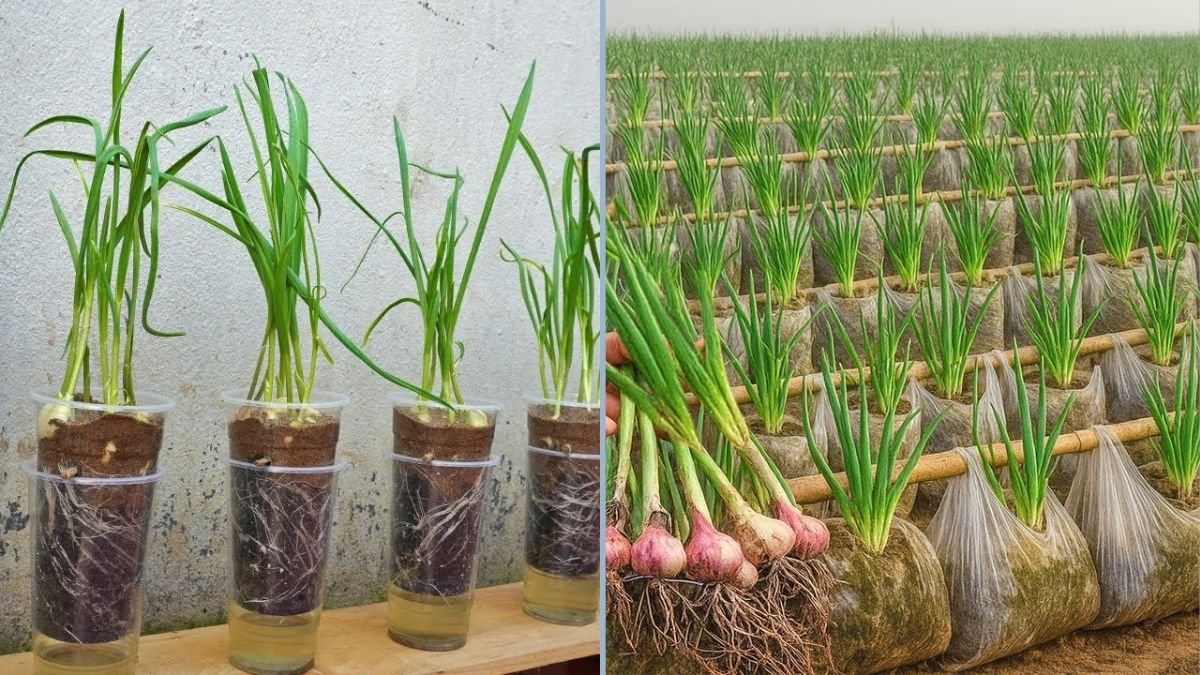Garlic is a staple in kitchens worldwide, celebrated for its flavor, aroma, and numerous health benefits. From enhancing everyday dishes to acting as a natural remedy, garlic is indispensable. Yet, buying fresh garlic from stores can be costly, and storage often becomes an issue.
What if there was a simple, space-saving, and eco-friendly way to grow garlic at home, using materials you already have—like old plastic bags? Not only does this method help you save money, but it also recycles waste, turning single-use plastic bags into functional, productive gardening tools.
In this blog, we’ll explore a step-by-step guide to growing garlic in old plastic bags, tips for maximizing yield, pest management, and harvesting techniques to ensure healthy, flavorful garlic bulbs.
Why Use Plastic Bags to Grow Garlic?
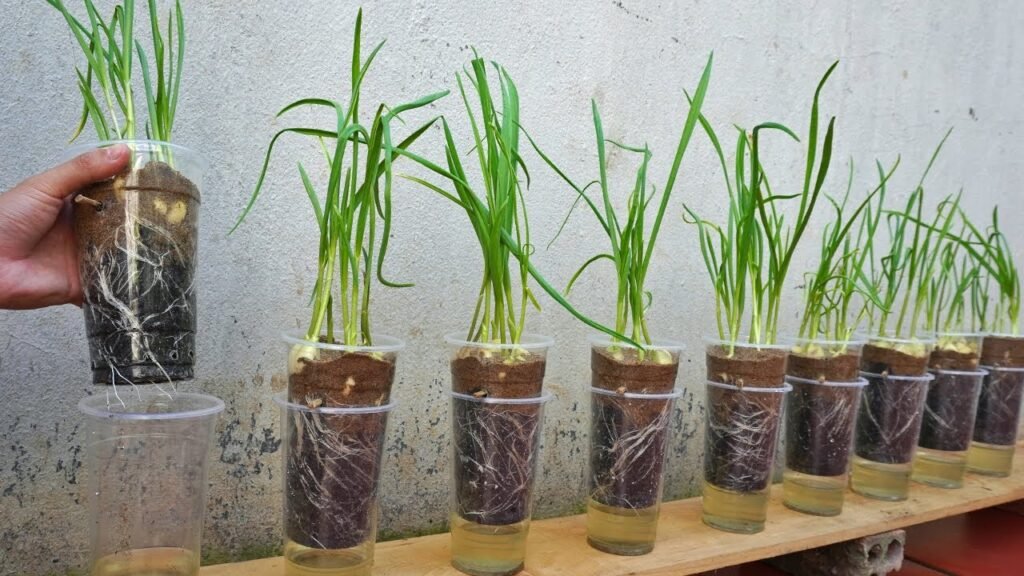
1. Sustainability
Plastic waste is a global concern. Repurposing old bags as planters reduces environmental pollution while giving them a productive second life.
2. Space Efficiency
Plastic bags are flexible, lightweight, and ideal for small spaces. Whether you live in an apartment, have a balcony, or a small garden, this method allows you to grow garlic without taking up much space.
3. Cost-Effective Gardening
Instead of investing in pots or raised beds, using old plastic bags is free and readily available. This makes garlic cultivation accessible for everyone.
4. Better Soil Control
Plastic bags allow you to manage soil quality easily, ensuring optimal drainage, nutrient content, and moisture levels for garlic growth.
5. Mobility
These bags can be moved to catch sunlight or protect plants from extreme weather, giving you full control over their growing environment.
Understanding Garlic Growth
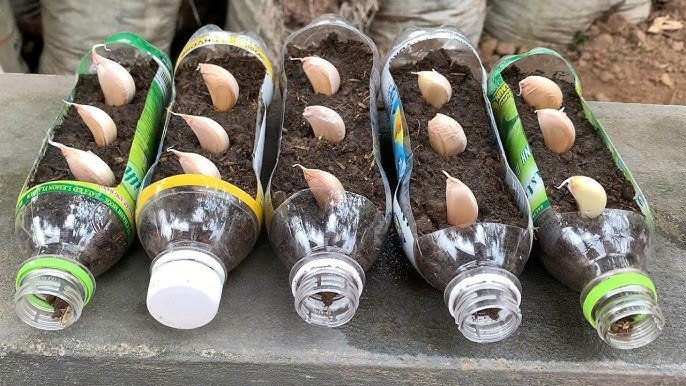
Before planting, it’s important to know how garlic grows:
- Cool-Season Crop: Garlic thrives in temperatures between 50–70°F (10–21°C).
- Propagation: Garlic is grown from cloves, not seeds. Each clove can produce one bulb.
- Soil Needs: Loose, well-draining soil rich in organic matter is ideal.
- Fruiting Period: Garlic usually takes 4–6 months to mature.
- Spacing: Proper spacing ensures full, healthy bulbs.
Knowing these basics ensures your garlic grows large, strong, and flavorful.
Materials Needed
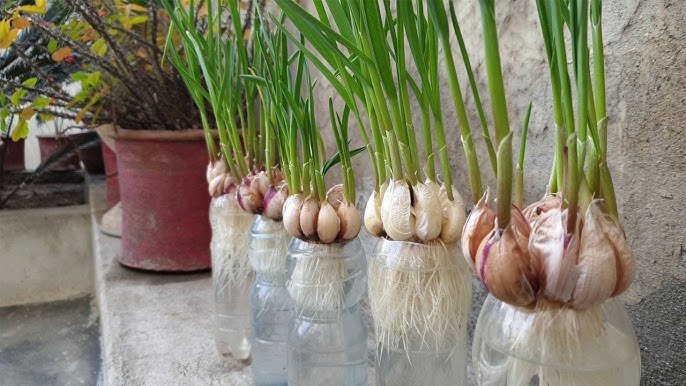
To grow garlic in plastic bags, you’ll need:
- Old plastic bags – Clean and sturdy
- Garlic cloves – Choose healthy, firm cloves
- Potting mix or garden soil – Loamy and nutrient-rich
- Compost – To enrich the soil
- Watering can – For consistent watering
- Scissors or knife – To create drainage holes in the bag
Step-by-Step Guide to Growing Garlic in Plastic Bags
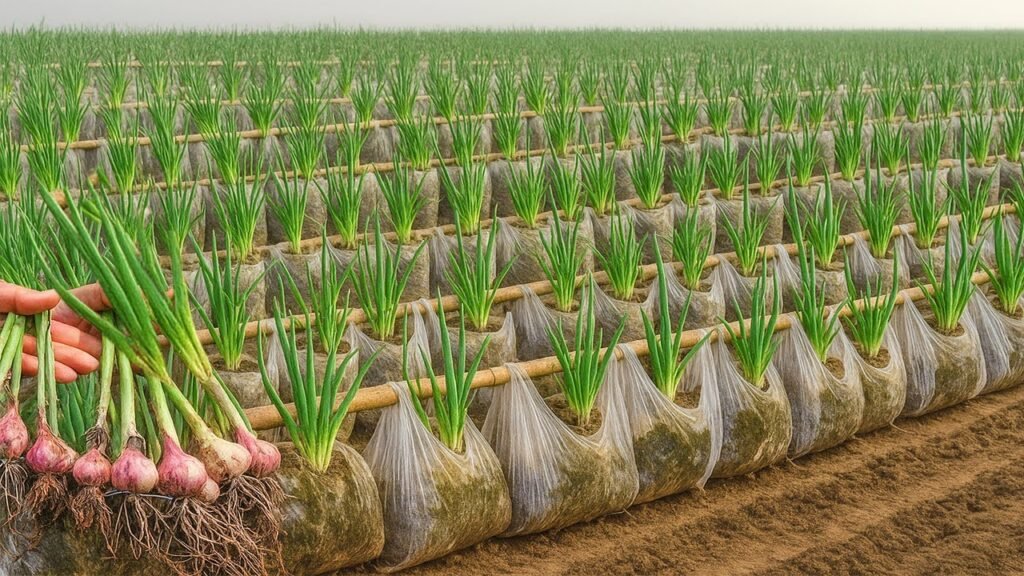
Step 1: Prepare the Plastic Bag
- Wash the bag thoroughly to remove any dirt or residues.
- Make 3–5 small holes at the bottom for drainage. Proper drainage prevents waterlogging and root rot.
- Optionally, create a small flap or side opening to check root growth and soil moisture.
Step 2: Add Soil and Compost
- Fill the bottom of the bag with a 1–2 inch layer of small stones or gravel to improve drainage.
- Add a mix of soil and compost, leaving 2–3 inches from the top.
- Lightly moisten the soil before planting garlic cloves.
Step 3: Plant the Garlic Cloves
- Separate the cloves from a garlic bulb, keeping the skin intact.
- Plant each clove upright, with the pointed tip facing up, about 2 inches deep and 4–6 inches apart.
- Cover lightly with soil and gently press down to secure the cloves.
Step 4: Position the Bags
- Place the bags in a sunny location, ideally receiving 6–8 hours of sunlight per day.
- If indoors, place them near a bright window or use grow lights.
Step 5: Watering and Care
- Garlic prefers consistently moist soil but not waterlogged.
- Water when the top inch of soil feels dry.
- Mulch the soil surface with straw or dried leaves to retain moisture, suppress weeds, and maintain stable soil temperature.
Fertilizing Garlic
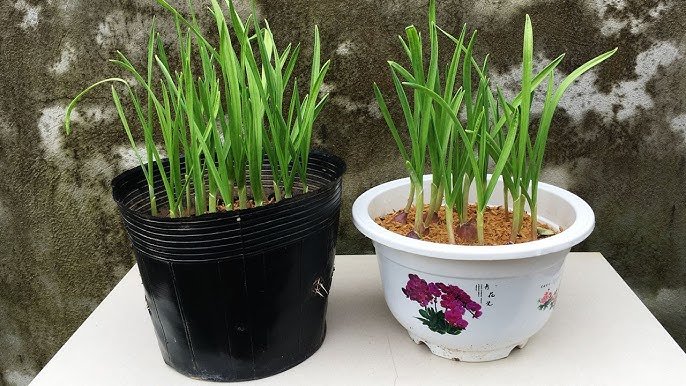
- Initial Stage: Garlic doesn’t need heavy fertilization initially; compost-enriched soil is usually sufficient.
- Growth Stage: Apply a nitrogen-rich fertilizer after 4–6 weeks to support strong leaf development.
- Maturation Stage: Reduce nitrogen application in the last month to encourage bulb formation.
Managing Pests and Diseases
Even in bags, garlic may face minor pests:
- Aphids: Spray with neem oil or mild soap solution.
- Fungal Diseases: Proper drainage, sunlight, and airflow prevent mold, mildew, or root rot.
- Slugs & Snails: Remove manually or use natural deterrents.
Regular monitoring ensures a healthy crop and prevents loss.
Harvesting Garlic
- Timing: Garlic is ready to harvest when the leaves turn yellow and begin to dry, typically 4–6 months after planting.
- Method: Carefully remove the bulbs from the soil, avoiding damage.
- Curing: Hang bulbs in a cool, dry, and ventilated space for 2–3 weeks to cure. This enhances storage life and flavor.
- Storage: Store cured bulbs in a dry, dark place for up to 6 months.
Advantages of This Method
- Eco-Friendly: Recycles plastic bags that would otherwise pollute the environment.
- Space-Saving: Ideal for apartments, balconies, and small gardens.
- Cost-Effective: Eliminates the need to buy garlic regularly.
- Controlled Growth: You can manage soil, water, and sunlight for optimal results.
- High-Quality Produce: Fresh, flavorful garlic straight from your home.
Tips for Maximizing Garlic Yield
- Clove Selection: Choose the largest, healthiest cloves for planting—they yield bigger bulbs.
- Proper Spacing: Avoid overcrowding to ensure proper bulb development.
- Consistent Watering: Prevent the soil from drying out completely.
- Sunlight Exposure: Garlic needs at least 6 hours of sunlight for strong growth.
- Regular Monitoring: Watch for pests and diseases, especially in damp conditions.
Culinary Uses for Homegrown Garlic
- Cooking: Essential in sauces, soups, stews, and roasted dishes.
- Medicinal Use: Supports immunity, heart health, and digestion.
- Pickling & Preserving: Make garlic paste or preserved garlic cloves.
- Flavor Enhancer: Fresh garlic elevates the taste of almost any savory dish.
Having garlic at hand ensures flavor and nutrition are never compromised.
Conclusion
Growing garlic in old plastic bags is a simple, practical, and sustainable gardening technique that turns waste into a productive tool. This method allows anyone, regardless of space constraints, to cultivate high-quality garlic at home while saving money and reducing environmental impact.
With proper soil preparation, careful planting, consistent watering, and pest management, your garlic crop can thrive and produce large, flavorful bulbs. By recycling plastic bags for planting, you contribute to sustainability while enjoying the satisfaction of growing your own food.
So next time you have old plastic bags lying around, don’t throw them away. Transform them into mini garlic planters and enjoy a bountiful, homegrown harvest right from your balcony or small garden. Fresh, aromatic garlic is just a few months away!
